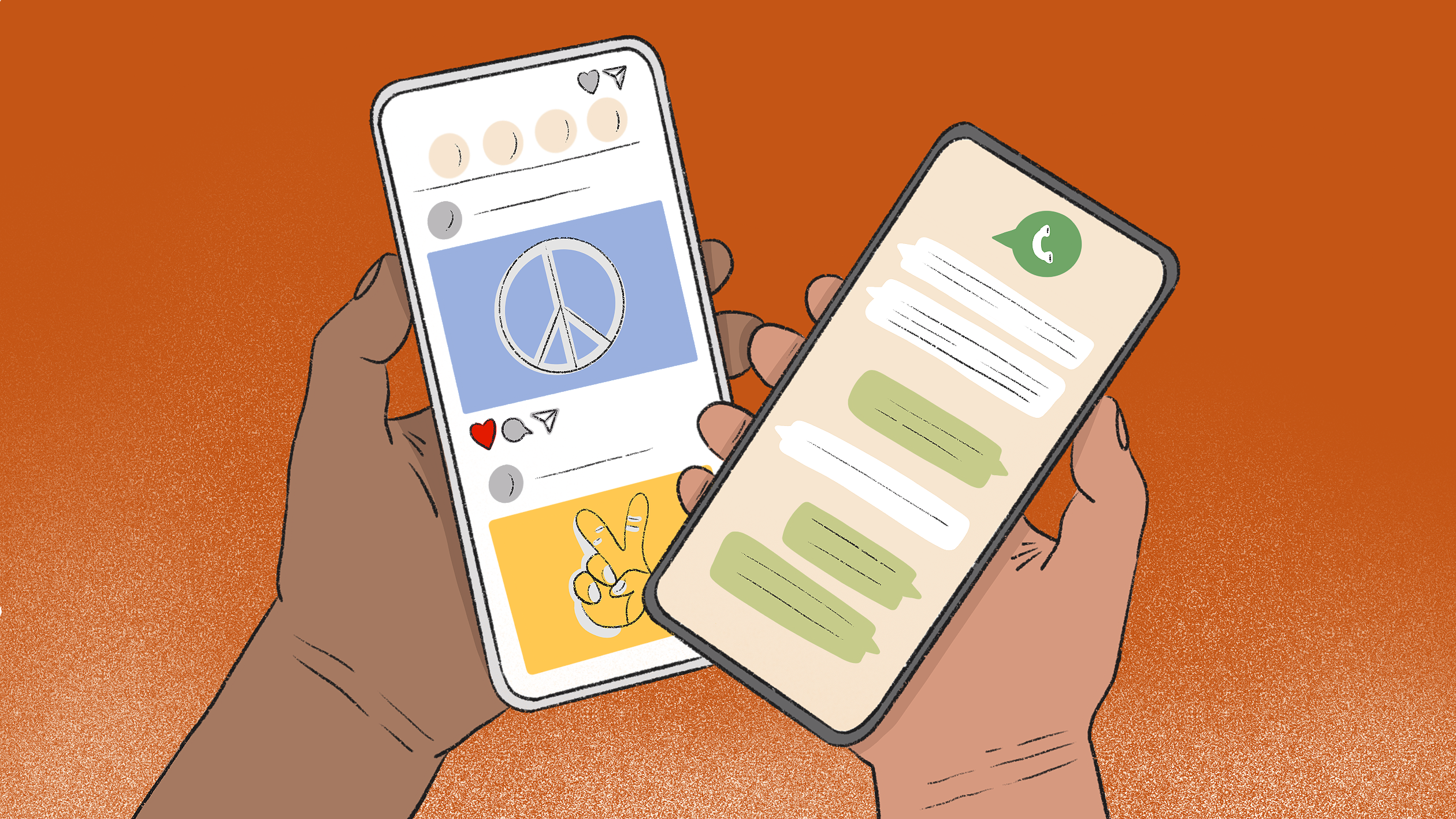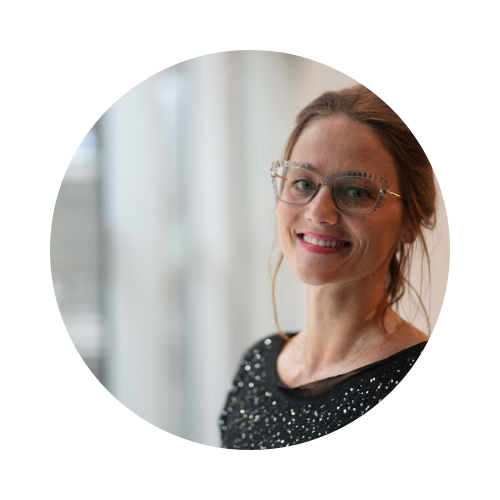
Illustration by Daniela Nunes
Young people taking action in times of conflict
by Lorena Baric
Six out of seven [people] worldwide are plagued by feelings of insecurity, the world is facing the highest number of violent conflicts since the Second World War and 2 billion people – a quarter of humanity – live in places affected by such conflict (according to a press release from the 9250th meeting of the UN Security Council).
I found this information while preparing to write this article. I was actually meticulously searching for information about the number of young people living in conflict areas today, and, while I was unable to find specific global data, this statistic from the UN Security Council press release left a huge impression on me. Conflict undoubtedly gravely negatively affects the lives of people, but, in times of war, young people are often the most vulnerable members of society. They are at risk of violence, displacement and exploitation. However, young people are also resilient and resourceful. They have a unique perspective on the challenges of war, and they are often motivated to take action to create a better future.
Young people who are engaged in peacebuilding and conflict-resolution activities, and in advocating for peace create positive change in their communities and societies. Despite the grave challenges they face during times of war, young people can be agents of change through their active participation and involvement in various activities aimed at addressing the issues and consequences of conflict.
 When we say taking action, what do we mean exactly?
When we say taking action, what do we mean exactly?
For this article, I interviewed Ms Kateryna Onishchuk, an activist from European Youth of Ukraine, who shared an insight into how she is engaged in taking action in the war in Ukraine:
My activities can be divided into two groups: professional and voluntary. In terms of my work, I do translations of Ukrainian news, and interviews of soldiers, psychologists, doctors for one of the largest national media outlets (ZN.UA – Dzerkalo Tyzhnia or Mirror of the Week) for foreigners to use as a primary source of proven information to help avoid info manipulation. As regards volunteering, I provide marketing/accounting/translating/any other support to fundraising for hospitals, international relations-related mass events, and mental health campaigns, in particular, within European Youth of Ukraine NGO (an All-Ukrainian liberal youth organisation – full member of International Federation of Liberal Youth (IFLRY) and European Liberal Youth (LYMEC)).
In researching the literature available, I found that one of the most prominent means of youth taking action is their political participation. According to the Youth Partnership, a partnership between the European Commission and the Council of Europe established to foster synergies between the two institutions’ work in the youth field, political participation “has many diverse forms – it can be conventional or unconventional, including activities such as voting, being members of political parties, serving on a local youth council, engaging through a youth organisation, or taking part in online political activism, boycotts, or a protest movement”.
However, in the ever-changing world, contexts and realities are different, and this poses opportunities for different types of youth actions.
The most common is peace activism where young people engage in peace movements and advocacy efforts to promote non-violence and conflict resolution. They might organise protests, demonstrations and international awareness-raising campaigns in order to advocate for a peaceful resolution. One example of this can be seen during the global
Another example in Europe is the Otpor movement (Otpor = resistance) in Serbia. Otpor was a youth-led non-violent movement that was key to overthrowing the authoritarian regime of Slobodan Milošević in the early 2000s. Young activists, students and youth organisations organised protests, marches and civil disobedience acts to show their opposition to the regime’s policies and promote democratic values. I, myself, as a 16-year-old, was an Otpor activist. So, speaking from personal experience, being politically active at that time was a matter of life or death. As a young person with many aspirations and dreams living in an oppressed country with limited opportunities, you simply had to show up, take part and try to build a better future. And, we did at the time. And it created such a positive atmosphere of hope, solidarity and light at the end of the tunnel. What happened next in Serbia is a story for another article.
Both of these movements garnered widespread support and show how young people can influence governments and policy makers.
Another area where young people take action is in humanitarian work. During the start of the war in Ukraine, numerous volunteers, mostly young people, organised themselves or joined various international humanitarian organisations to provide support by distributing food and medical supplies, and participating in other relief work. Their involvement highlights the compassion and dedication of young people in mitigating the effects of war and assisting those affected by it. Ms Onishchuk shares that young people in Ukraine now participate in blood transfusion campaigns or auctions to sell handicrafts, and in charity workshops to fundraise for healthcare, hospitals, food distribution centres, schools or animal shelters. “For example, dance schools in Kyiv and other cities, I’m sure, donate some percentage of income to Okhmatdyt – the National Children’s Specialised Hospital of the Ministry of Health of Ukraine, where, in particular, kids wounded by Russian missiles, drones and artillery are taken care of.”
Media activism is probably the most visible type of action, particularly evident in the context of the Russian aggression against Ukraine. Many young people have utilised their social media platforms to raise awareness, fundraise and voice their opinions, concerns and calls to action. Such is Yuliia Tymoshenko (@yulia_tymosha). With her account, she singularly managed to amplify the voice of young people and reach a global audience, contributing to raising awareness of the situation in Ukraine. But also by sharing her personal struggles she reflected the reality of the challenges young people face as a consequence of the war – displacement, lack of connection with family, limited access to employment opportunities, education and healthcare, and psychological trauma. When asked about what motivated her to take up social media and be vocal about the situation she shared:
month before the full-scale invasion, I created my first post on the situation in Ukraine with my international friends in mind who, at that time, were eager to spread awareness and help. Something that I made for 20 people, reached almost a million because this simple post went viral. This made me realise that people do not want to just read about Ukraine from the news but they want to see the situation from the perspective of someone who lives in Ukraine and experiences the war first hand. It’s way more humanising. I always talk about the Russian invasion, war crimes, attacks, and the toll of being a young person living in an invaded country fighting for its existence. But I also show my day-to-day life, interests and hobbies on my Instagram, just like any young person does. For some, it can be jarring to see the contrast in which I live – hearing bombs at night and dressings up to go to brunch with friends in the morning. But this is exactly the reality of most Ukrainians right now and I think it’s important to show how we are trying to live a normal life in a situation that is so far from normal.
Social media are such powerful and accessible platforms, and they provide an opportunity for young people to “develop news based on their needs, priorities and perspectives” (New forms of youth political participation: statistical survey, p. 6).
Throughout history, young people have proven to be agents of change through various forms and definitions of participation. It is crucial to recognise and celebrate young people as key drivers of positive change and societal development and to support and empower them to engage actively in democratic processes. During the Youth Partnership’s Symposium “Visible value: growing youth work in Europe”, Phill Gittins, the World Beyond War’s Education Director, said during a workshop: “Empowering and mobilising young people to promote peace and challenge war is one of the largest, most global, and important challenges facing humanity.”
 How do the prominent European institutions active in the youth field help?
How do the prominent European institutions active in the youth field help?
The European institutions active in the youth field have recognised the importance of youth engagement and have developed policies and initiatives to promote their active participation in democratic processes. One of the key goals of these institutions is to promote democracy, which includes creating the means for young people to participate actively in policy making and policy changing. The Council of Europe’s Democracy Here | Democracy Now campaign, for instance, promotes inclusive and participatory democracy by encouraging young people to engage in political decision making, express their views and contribute to shaping their communities and societies. While the campaign does not specifically focus on youth taking action in times of war, it is relevant to the broader context of youth engagement and participation in democratic processes, including situations of conflict or post-conflict. By providing platforms for dialogue, training and networking, the project supports young people in developing their leadership skills, critical-thinking abilities and their understanding of democratic principles, and utilising these even in the most challenging of circumstances.
In addition to supporting youth-led initiatives, European policy also emphasises the importance of providing resources, mentorship and training opportunities to young people. By investing in their education, skills development and capacity building, European institutions aim to empower young people to effectively contribute to peacebuilding efforts in their communities. These initiatives focus not only on the youth within Europe but also extend support to young people in conflict-affected regions around the world.
The Erasmus+ or the European Solidarity Corps programmes are examples of these efforts.
In conclusion, while conflict poses numerous challenges for young people, their potential to create positive change should not be underestimated. Through various forms of participation, including political engagement, peace activism, humanitarian work and media activism, young people have demonstrated their ability to influence policies, raise awareness and contribute to peacebuilding efforts. Sustained support, resources and recognition are necessary to empower young people as active agents of peace and catalysts for societal development, especially in times of war and conflict.
Lorena is an editor of Coyote magazine, a writer, and a youth information worker.



